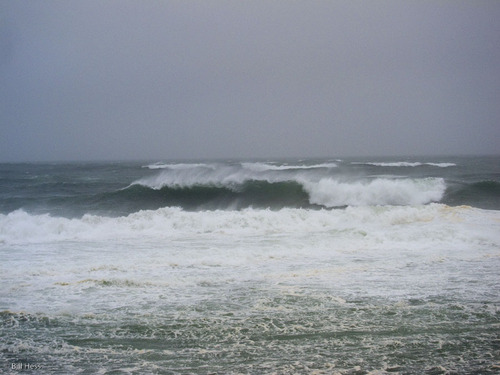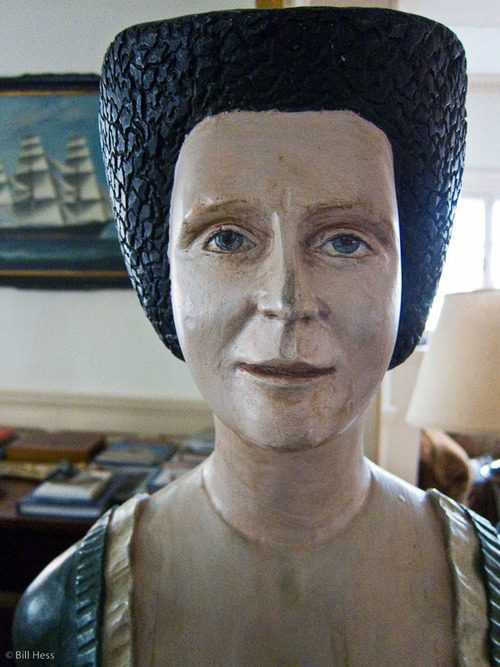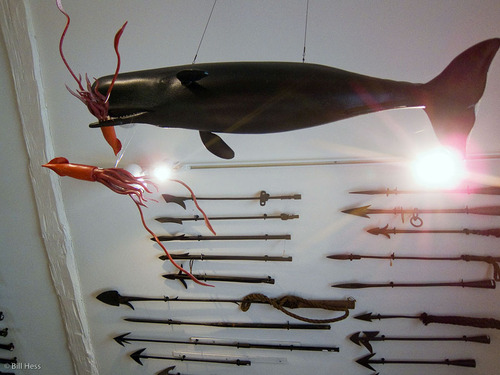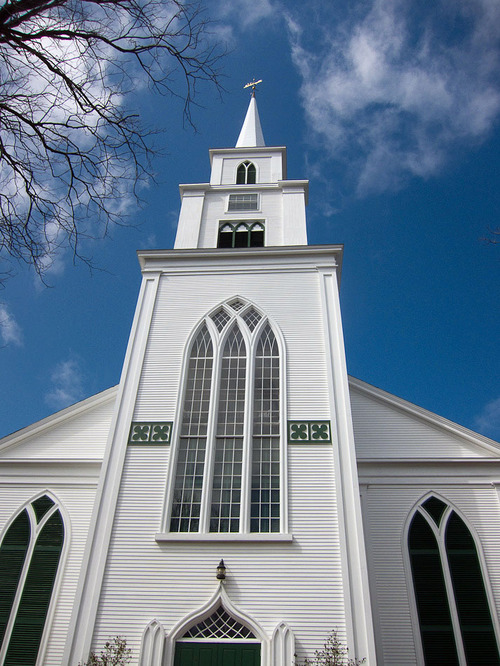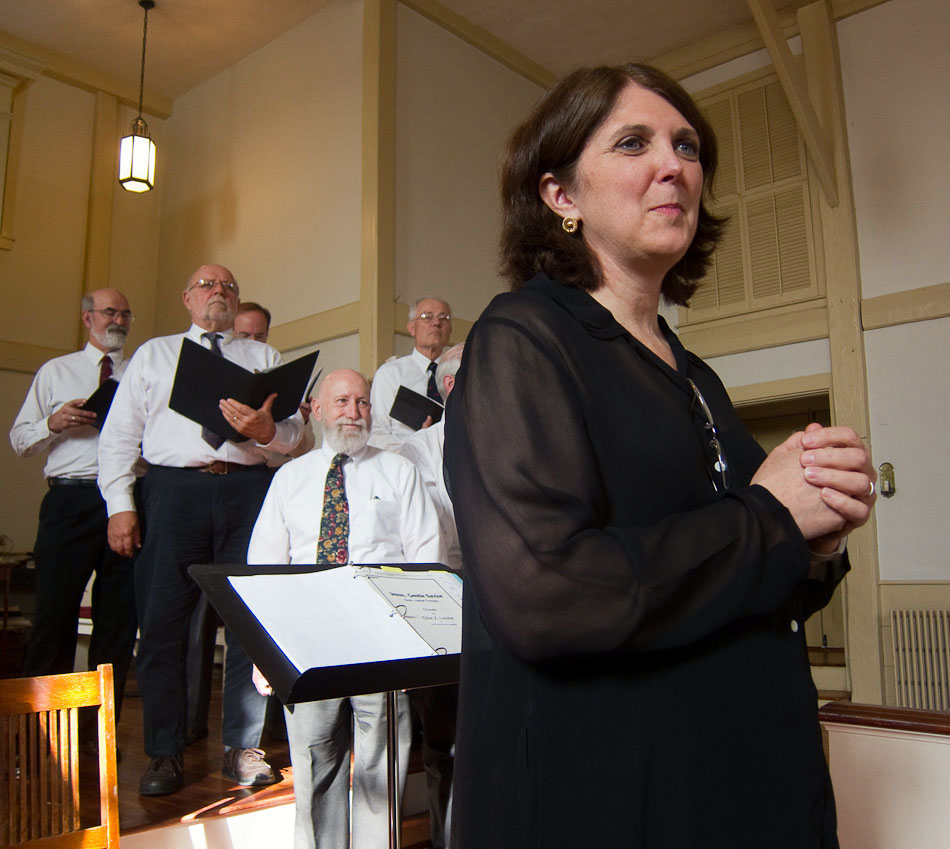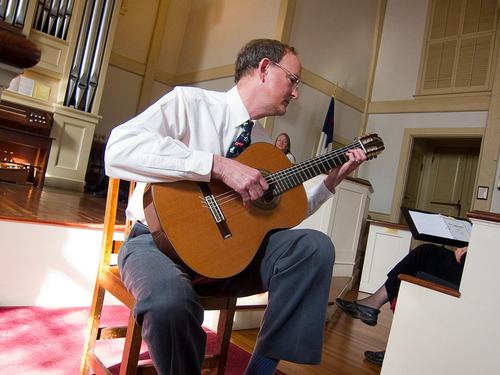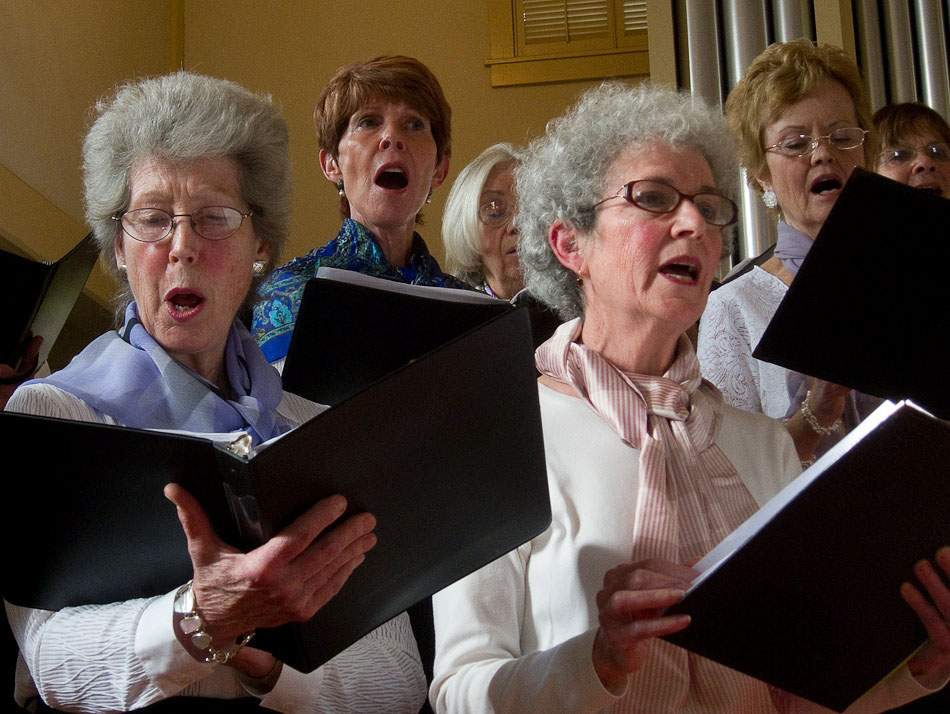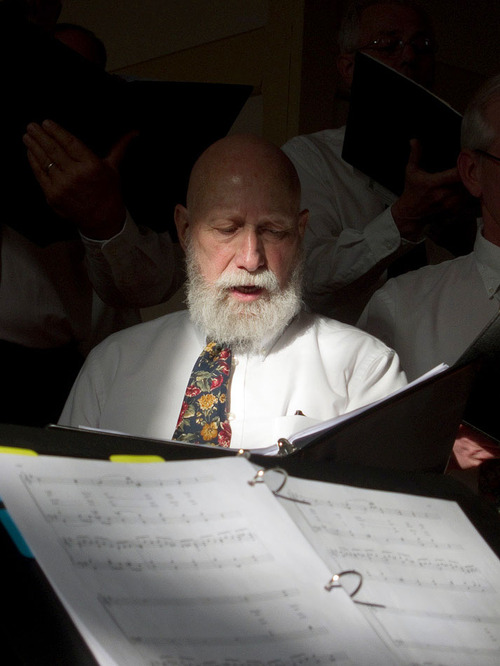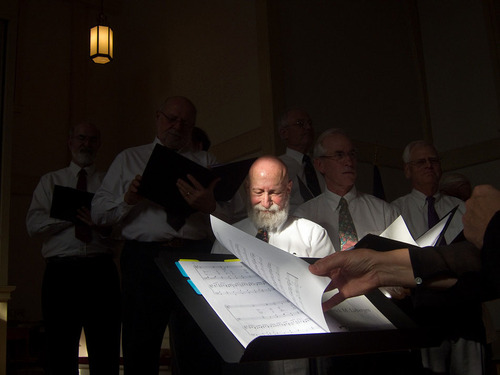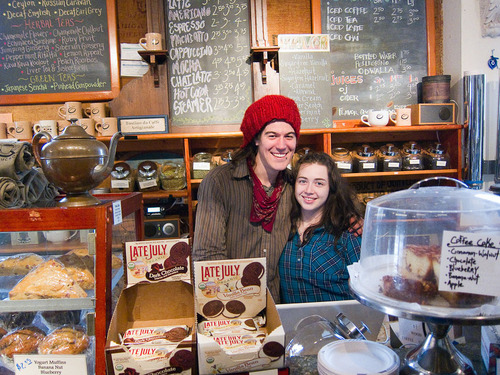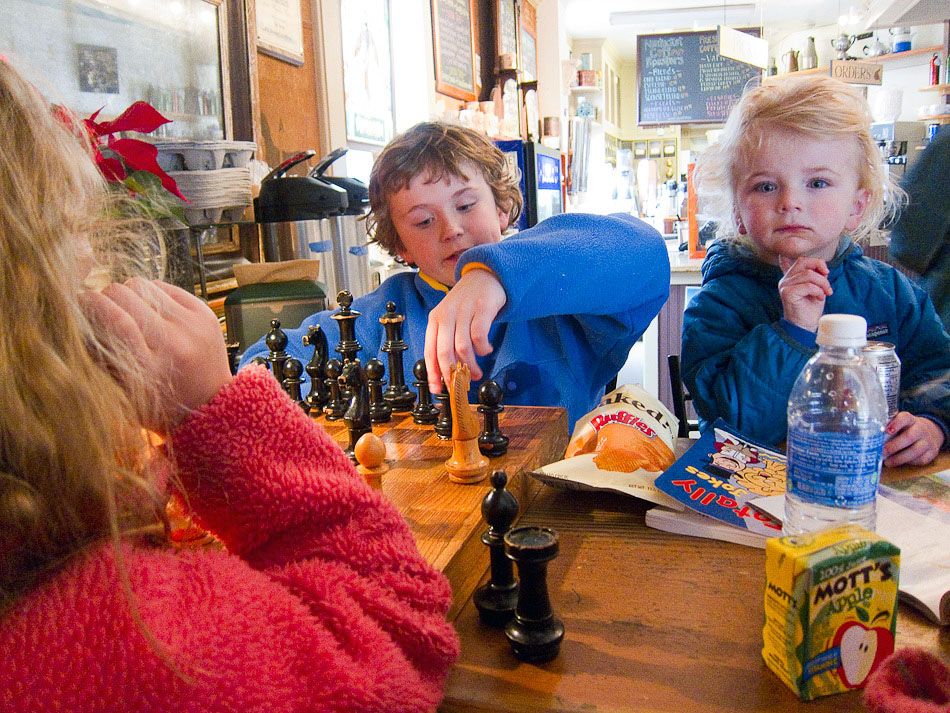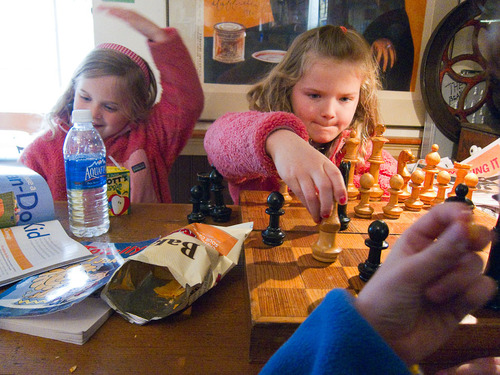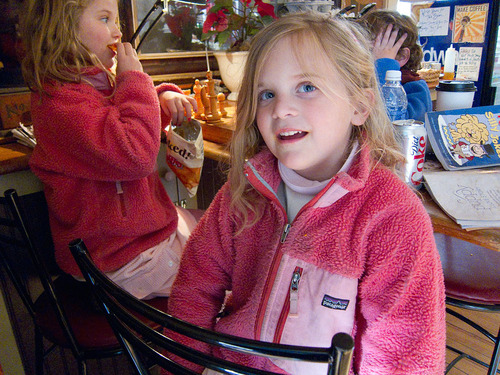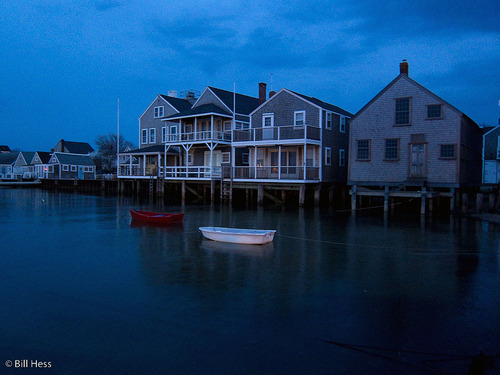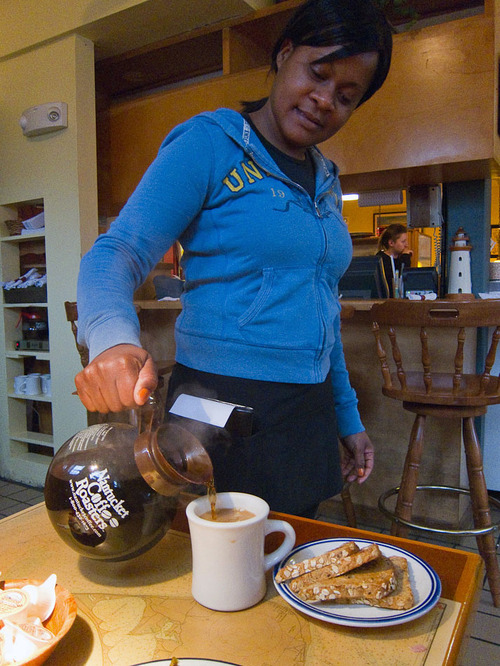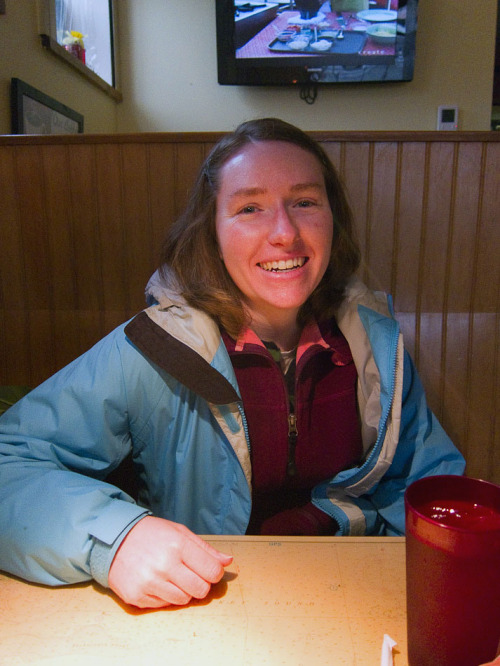I sadly leave the mansion at 99 Main, fly out of Nantucket, wind up in New York, ride the subway, dine, and wind up with Chie and her students at Columbia University
 Thursday, April 1, 2010 at 12:39PM
Thursday, April 1, 2010 at 12:39PM Although I have experienced these feelings countless times in the past and expect to do so again in the future, I still do not understand why. As usually happens when I travel to another place, I felt a sad ache, as though I were leaving a place that I had known for a long time - a place that was home.
I have felt this feeling in villages all across Alaska, various places in the Lower 48 and Canada, Greenland, The UK, Russia, Mexico and India.
All these places cannot be my home, so why do I feel this way when it comes time to depart?
It had been my intent to devote a post entirely to the Quaker modest mansion at 99 Main and to photograph all the art work, stairs, antique furniture and such that adorns, but I never managed to do it.
Just before I left, I did photograph this ceramic cat that sits atop a chest in the bedroom that I occupied.
I should also note that I did succeed in photographing two living, breathing, cats in Nantucket.
I have not yet had a chance to look at those photos - and I took many, more than I did of any other single subject that I shot. In fact, I took just about as many pictures of those two cats as I did of all my other Nantucket subjects combined.
There are three reasons for this: one, the home in which I photographed the cats was very dark and I was shooting at extremely slow shutters speeds and I knew that many of the pictures would be badly blurred and cruddy looking. Two, it was pouring rain outside and so my host and I stayed inside for about 45 minutes or so and I had nothing else to do during that time but to photograph the cats.
Third, the cats were the only subjects in Nantucket that I used my big DSLR camera on. That camera shoots five frames a second, so one tends to hold the shutter down and just bang away, like it was a machine gun.
The pocket camera, however, can sort of manage one frame every 1.5 seconds, but it is really slower than that, because it takes time to focus, to zoom in and out and to do all kinds of things that happen very quickly with the DSLR.
This is a pocket camera defect that I both love and hate.

Soon, Ben Simons dropped me off at Cape Air and I was on the plane, about to fly to Boston. The lady in front of me was reading a newspaper and I could not help but notice that the local high school athletic teams call themselves the "Whalers" and "Lady Whalers" - just like in Barrow.
The difference is, when they use this name in Barrow, they describe themselves as they are now and always have been.
When they use it in Nantucket, they describe a people of the past who followed a short-lived, furious, money-making enterprise that seems to have been a model for much of what has happened since in the United States: a resource is discovered, that resource is exploited at all costs, making some people very rich while leaving many more disappointed; it drives other industry and development, is then depleted and the communities that are built upon it fall, to be replaced by something else.
Then that short, furious, past is remembered romantically.
I promised that I would make a post, or maybe two or three, in which I would use some of the many photographs that I took in Nantucket to say what I could of that past. I still will. As I flew toward Boston and then New York, I began to read the book, In the Heart of the Sea: The Tragedy of the Whaleship Essex, given to me by Bill Tramposch, the Executive Director of the Nantucket Historical Association.
With each turn of the page, I learned something new and decided that I would wait until after I get home and finish this book to make that report.
Soon, we were landing in Boston.

This young lady was very worried that she was going to miss her flight. Somehow, she had managed to remain on the Boston Logan Airport Shuttle as it passed the terminal she was supposed to fly out of. Now she had to go all the way around the airport again and she was already cutting it close.
Not long after that, I was on the ground in New York, riding the subway, headed for Manhattan.
After I got off the subway, I walked to the Alaska House and I was overdressed, wearing both a sweatshirt and jacket in what for me was t-shirt weather. I was hot, sweaty and dehydrated when I got there. I was given the keys to the guest house where I now stay, told that it was about a 15-20 minute walk and it was suggested that, to prevent me from getting even hotter and sweatier, I take a cab.
I was going to do so, but when I got to the cabs, I was traveling faster on foot they were on wheels, so I decided just to walk. When I arrived at the guest house, I could not open the double-deadbolted door. I could hear and feel the deadbolts moving and clicking, but I tried and tried and tried and those doors would not open.
So I called Ellaine at Alaska House, and she sent Andre, originally of Hooper Bay, over to help me. As I waited for him, I saw this man walking this dog. Andre arrived about 15 minutes later and at first experienced the same problem, but then he quickly recalled the feel of it and opened the door.
He showed me how and ever since then, the door has been easy to open. I can't even imagine why it was hard to begin with.
About 8:PM, I set out in seach of some food to eat. I had not gone far before I came across this scantily clad mannequin. I would soon discover that such mannequins are common in this neighborhood. In Wasilla, we do not see mannequins dressed like this. Wasilla mannequins dress much more modestly, even when left alone all night with their closest male friends and husbands.
They say that sex sells. Now that I have posted this picture, maybe I can finally begin to make some money with this blog.

I never did discover the name of this restaurant, but I came upon it after I had walked over 20 blocks, during which time I passed many restaurants and had one pizza guy threaten me when I walked into his restaurant, looked the goods over, found nothing that appealed to me and turned to walk back out.
I just laughed him off.
This restaurant was excellent. I don't remember the name of the dish that I ordered, but it was packed with mushrooms and more hot spice than I should be eating and tasted so very good.
These three diners kept photographing each other, but could not get everybody in one shot. So I offered to take a picture of all three with their camera.
They admire pictures of themselves. "Thank you," they said to me, when they left.
Would you believe it? After dinner, I walked back to the guest house, relaxed for just a little bit, then took a 26 block walk but forgot my camera. I could photograph nothing. I decided that I did not want to walk another 26 blocks back and would ride the subway back instead.
It took me to a different place than where I wanted to go.
When I got off, I discovered that I still had about 15 blocks to walk. I said, "what the hell," and walked it.

I got up early this morning and rode the subway all the way from Lower to Upper Manhattan, where I found Chie Sakakibara looking for me.
Chie is originally from Japan, but has spent a great deal of time in Barrow and has become close to many families there. When she learned that I was coming to New York, she invited me to come and show my slides to students in the "Indigenous Peoples and Environment" course that she teaches under Columbia's "Center for the Study of Ethnicity and Race."
With her colleague, anthropologist Aaron Fox, Director of Columbia University’s Center for Ethnomusicology, Chie helped return some lost dances, filmed in 1946, to Barrow. The dances were performed at the last Kivgiq and both she and Fox were called onto the floor to dance.
Before her students arrived, we did a technology check in the classroom. Chie then surprised me and pulled out a container of bowhead meat and offered me a taste of breakfast.
I have eaten some fine food on this trip, but the little bit of bowhead that I ate here is the best thing that I have tasted on these travels.
It is from a whale caught by the crew of Roy and Flossie Nageak of Barrow, who have adopted Chie into their family. I wanted to keep eat more than my fair share, but feared I would deplete too much of Chie's precious stash.
"It's okay," she said. "Roy will get me another one."
Her beautiful attiqluk was sewn for her by Esther Frankson of Point Hope.
When her students arrived, each shared in the bowhead breakfast. I heard nothing but praise for it. I am often asked to describe the taste of bowhead and this always leaves me at a loss. It tastes like bowhead, and nothing else. Furthermore, each part tastes different than the other parts.
"This tastes like a kangaroo of the sea," one of her students said.
So now I finally know how to describe it.
My presentation was well-received. Afterward, I was still hungry, so we went to campus coffee shop where Chie ordered tea and bought me a coffee and an egg, cheese and ham bagel sandwich.
Soon we were joined by artist Les Joynes, who is at Columbia as a Visiting Scholar in Contemporary Art from the University of London. He had planned to come for my presentation, but a 16 year-old cat that he got in Japan, where Joynes has spent much of his life, had some emergency medical problems. Joynes had to attend to the cat - something that I understand fully.
He created the piece in front of him in Singapore as part of a long-term project that depicts how people become separate and alien from their own environments. With the position of his hands and arms, Les is describing some of the positions that some of the people of Pompei died in, as evidenced in the "molds" left behind in the volcanic lava.
He is also launching an art project in the Arctic.

Chie and Les, Columbia University.











